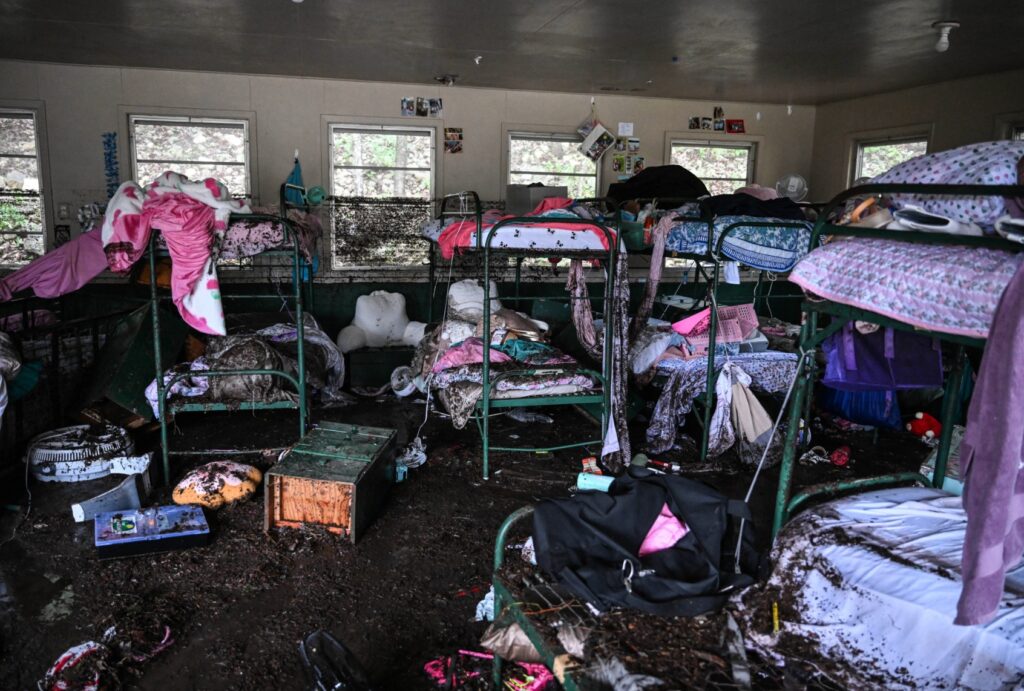
The recent flooding in Texas has claimed more than 100 lives, echoing the devastation wrought by Hurricane Helene nine months earlier in North Carolina. Both disasters reveal a troubling disconnect between timely weather warnings and the actions taken to protect vulnerable communities.
On July 4, 2023, the remnants of Tropical Storm Barry swept into south central Texas, bringing heavy rainfall that overwhelmed rivers and creeks. Many victims were children, and reports indicate that some were not evacuated despite urgent warnings from the National Weather Service. This mirrors the catastrophe seen during Hurricane Helene, which struck western North Carolina on September 27, 2022, resulting in over 100 fatalities, primarily due to flooding and landslides.
Jeff Howell, the former emergency manager in Yancey County, North Carolina, reflected on the enormity of Helene’s impact. He stated, “We had no idea it was going to do what it did,” highlighting the surprise and severity of the storm that left many residents unprepared.
In Texas, Rob Kelly, the county judge of Kerr County, expressed disbelief at the scale of the flooding, asserting, “We had no reason to believe that this was going to be anything like what’s happened here — none whatsoever.” Despite clear alerts from the National Weather Service, local responses varied. Some officials acted swiftly, while others failed to evacuate vulnerable populations.
Urgent alerts were issued well in advance of both disasters. The National Weather Service had forecast Helene’s approach for days, issuing increasingly dire warnings about potential flash floods. On July 3, 2023, prior to the Texas floods, the agency reiterated the risk, stating, “Flash flooding is ongoing or expected to begin shortly.”
AccuWeather provided early warnings as well, with alerts sent out at 12:44 a.m. on July 4 for areas in central Kerr County. Tragically, many campers at Camp Mystic, a well-known summer camp, were caught off guard. At least 27 campers and counselors lost their lives, and six individuals remain missing. Eyewitness accounts suggest that campers were not alerted to evacuate until the floodwaters had begun to rise dramatically.
Jonathan Porter, chief meteorologist at AccuWeather, expressed his dismay over the lack of immediate response to the warnings. He described the situation as “a tragedy of the worst sort,” emphasizing that there appeared to be ample time to get campers to safety before the flooding escalated.
Local officials have debated the adequacy of their responses. Dalton Rice, city manager of Kerrville, indicated that the rapid rise in water levels made it challenging to communicate the risk effectively. He noted that he jogged near the Guadalupe River at 3:30 a.m., unaware of the looming danger, despite the fact that the river was rising rapidly just upstream.
As floodwaters surged, the National Weather Service upgraded its warnings to the most severe category, indicating a “particularly dangerous situation.” However, local authorities faced challenges in disseminating this critical information. In rural areas, where cell service can be unreliable, many residents may not receive alerts in time.
In Texas, residents reported mixed experiences, with some claiming they did not receive weather alerts, while others noted that their phones issued multiple warnings throughout the night. Kerr County utilizes an alert system called CodeRed, but it remains unclear what notifications were sent during the crisis.
The response to these disasters underscores a broader issue in emergency management. Pete Jensen, a veteran in the field, remarked on the prevalent mindset of denial among the public and even local officials, stating, “Disasters happen to someone else. They don’t happen to me.”
One notable difference between the two tragedies is the immediate call for accountability in Texas. Following the flooding, Governor Greg Abbott announced a special legislative session to discuss improvements to flood warning systems and emergency communications. This contrasts with North Carolina, where discussions on enhancing disaster preparedness have not gained significant traction since Helene.
In North Carolina, the state legislature has yet to address potential changes to its emergency response protocols, including expanding its evacuation plans. State Senator Julie Mayfield expressed concern, noting, “There still has not been an outcry here for, How do we do things differently?”
The North Carolina emergency management agency has begun reviewing its handling of Hurricane Helene, acknowledging staffing shortages but not fully examining evacuation strategies. Erika Andresen, a lawyer and emergency management educator in Asheville, criticized the lack of proactive measures, asserting the need for accountability in the wake of such disasters.
As Texas grapples with the aftermath of its recent floods, the parallels drawn with Hurricane Helene serve as a stark reminder of the vital importance of effective communication and swift action in the face of natural disasters. The lives lost in both tragedies highlight the urgent need for systematic improvements in emergency preparedness and response strategies.






